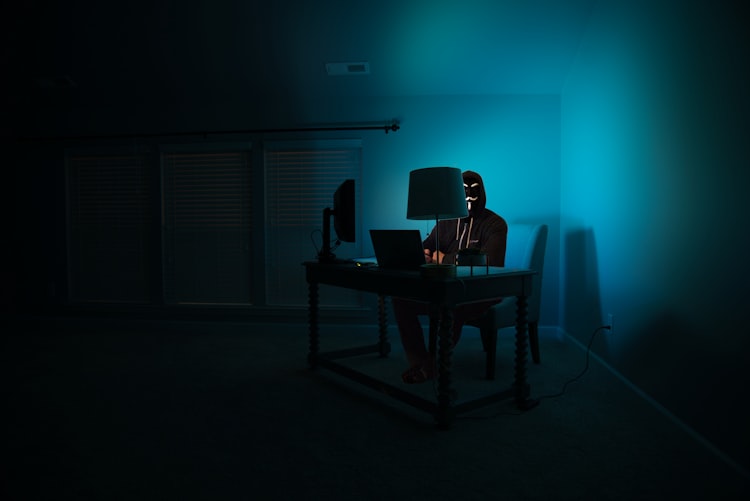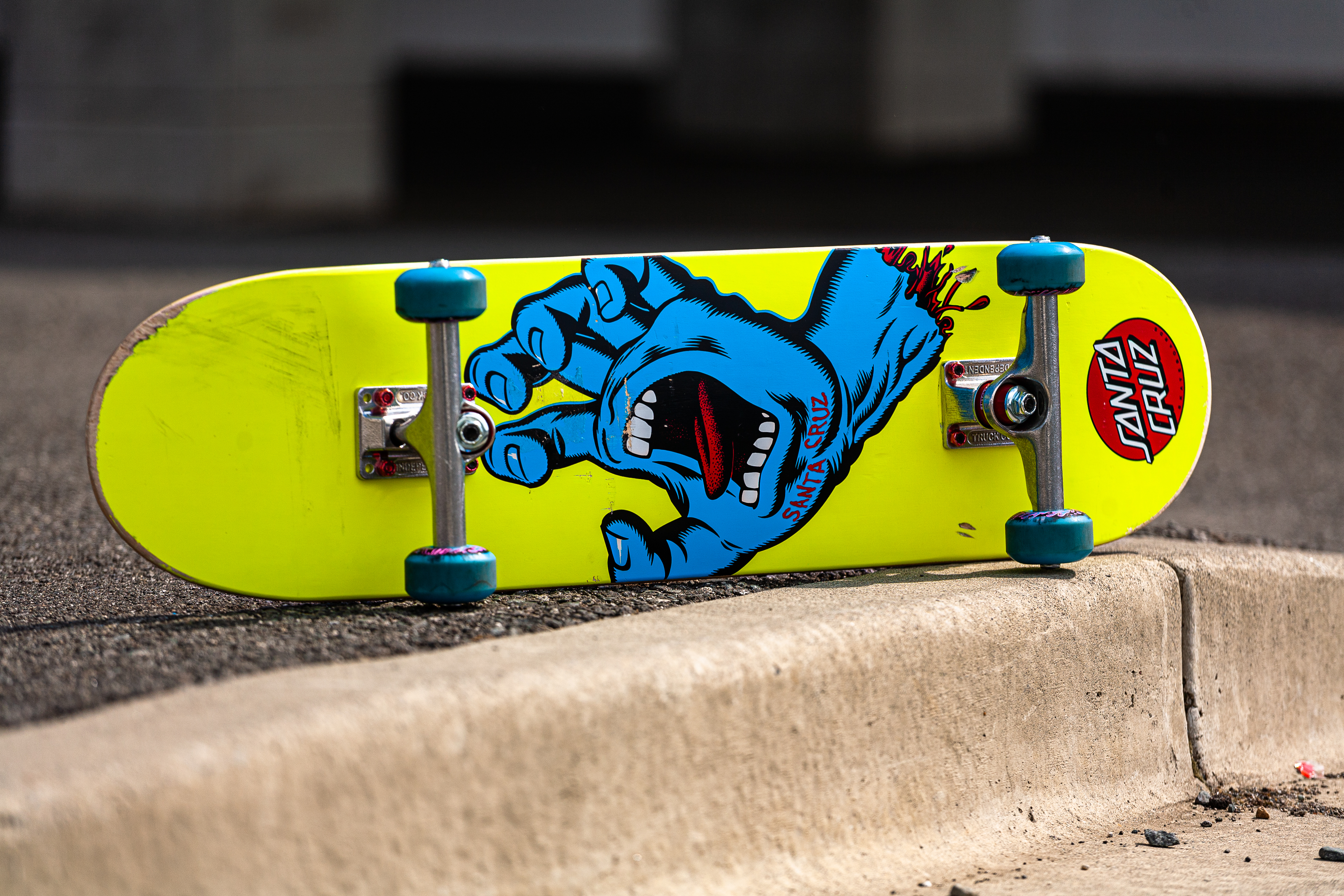Astrolabe 18: Welcome to Fandom with Amy Ratcliffe, 1.22474487139 reasons to love NieR, and why you shouldn't throw out your old TV
Welcome to Fandom, Kid.

What was your first fandom? Not the first thing you loved, or your favourite show as a kid, but the first thing that motivated you to seek out other fans, to become a part of a community devoted to loving a particular book, video game, film, or sports team?
For me, it all goes back to Terry Brooks's Shannara series. Tolkien introduced me to epic fantasy, but Shannara was the rabbit hole that dropped me deeply into epic fantasy fandom. I was a teen when BBS made was for Internet forums and online chat clients like ICQ or MSN Messenger, and, thanks to Brooks fans like Shawn Speakman, I discovered many communities devoted to his works. Furthermore, they were lively and positive places, not yet soaked in the latent toxicity and turf wars that defined many message boards of the era (and has become a global industry and political platform 20 years later.)
Like any microculture, fandom can be tricky to navigate. Cliques abound, public sentiment changes on a dime, going against the grain of popular opinion can make you a target for harassment, and it's easy to get unintentionally caught up in turf wars between fandoms (or even factions within larger fandoms.) And that's not even to mention in-person fan conventions.
But just because it presents all these challenges doesn't mean the experience isn't worth the hassle, especially for kids, who can find it liberating and validating to meet other kids (and adults!) who share their passions.
So, how does a kid take their first steps into fandom? Amy Ratcliffe's here to help with her new book, A Kid's Guide to Fandom.
"It's all about helping kids learn about what fandom is and how to embrace it," she told me. "Specifically transformative fandom that encourages kids to take their passion and use it to get creative and then connect with others who like the same things. Ultimately I hope the book helps kids feel more comfortable embracing the things they love and just being themselves."
Fandom has "a million different sparkling facets," Ratcliffe continued, but it all comes back to one special feeling. "At its core, fandom is that feeling you get when you read a book, play a game, or watch a movie or series and you think, 'This was made for me.'"

This interview with Amy Ratcliffe is part of Transmission Received, Astrolabe’s ongoing interview series. Two days after Astrolabe publishes, paid subscribers get early access to full transcripts or video interviews via a separate mailing.
This feature is being provided to all free subscribers for the first six interviews. (This is the fifth interview.) If you’d like to continue to receive them, or would like to support Astrolabe’s growth and maintenance, please consider subscribing.

Though fandom had been part of Ratcliffe's life since childhood, it wasn't until she was an adult that she discovered the community aspect of being a fan, or learned that it had the name "fandom." When you're the only kid in grade seven who loves Terry Brooks, the very thing that holds the potential to introduce you to countless other obsessed fans can instead feel lonely and isolating.
"I wish I would have known about [fandom] when I was a kid—just understanding that others out there also lost it over The Dark Crystal would have been reassuring," Ratcliffe said. So the idea of writing a book that helped kids and their parents navigate fandom felt like a great opportunity to share understanding that they're not alone with their passions.
And nowadays it's a lot easier to get involved in fandom than it was when Ratcliffe and I were growing up posting about Robert Jordan and Terry Brooks on message boards.
"Fandom is more accessible than ever," she said. "With pop culture becoming more mainstream, we're just exposed to more and more fictional worlds to connect with. If you start playing Minecraft, for example, about a million websites exist to help you with tips and custom builds. Some of your friends probably play too. And it's like that for everything. You can dip as much of your foot in as you want to, but the vast well of material there is... kinda overwhelming sometimes. A long way from my Wheel of Time forum days."
As anyone who's spent any time as part of an online fandom over the past decade can attest to, toxicity is rampant in many fandoms. And the consequences affect not only the fans, but the very things they worship. One need look no further than the vitriolic response to Rian Johnson's The Last Jedi from a small-but-vocal contingent of unhappy fans. It can be difficult enough for adults to navigate toxic fandom, and almost impossible for kids.
(Trust me. As someone who grew up on niche Final Fantasy message boards in the early 2000s, I can tell you it's not pretty.)

"Toxic fandom is definitely something to consider when stepping into any new fandom," Ratcliffe said. "Because even if it's only small groups of vocal people, it's still awful and still not acceptable. I think parents should be cognizant of that while navigating fandom spaces with their kids. It's one reason you can't just set kids loose in existing groups without some guidance. We can't pretend it doesn't exist.
"I really wanted to emphasize the importance of being kind to others and being open-minded, accepting, and non-judgmental in the book. I think when you're building a fandom community you can stay vigilant and create safe spaces that are welcoming to new folks, but it does mean kind of setting the tone from the beginning and not tolerating any toxic behavior."
Fandom has changed immensely over the 15 years since Ratcliffe first started posting on Wheel of Time message boards, and it's going to keep changing as communities ebb and flow, and technology impacts the way we communicate.
"Knowing that your fandoms and your communities will fluctuate is key," Ratcliffe said when I asked her how she saw fandom evolving. "You have to be prepared to let go."
So what does the future of fandom look like? Small fan conventions centred on single fandoms in the 60s gave way to Comic-Con and PAX—huge conventions celebrating geek culture at large. Social media has created one, big open conversation, with all the pros and cons that go along with that. But Ratcliffe sees fandom going in a different direction, back toward its roots, with smaller groups of hand-picked friends gathering together to talk about their favourite books, TV shows, or comics.
"I think since many of us have publicly shared our fandoms with everyone through social media platforms that we may shift towards curating our fandom spaces more and celebrating and critiquing with folks we are know and are comfortable with."

A Kid's Guide to Fandom by Amy Ratcliffe is out now from RP Kids. You can find Amy on her website, sign up for her fabulous newsletter, or find her on Twitter and Instagram at @amy_geek.
Out & About
(Out & About is where I highlight my work around the web—some recent and some old favourites.)
Your Grandma's Tube TV Is the Hottest Gaming Tech | WIRED — www.wired.com
Even just five years ago, only the most ardent retro gamers were interested in gaming on CRTs, but the audience has grown tremendously over the past few years.
“Your Grandma’s Tube TV Is the Hottest Gaming Tech” on WIRED explores the increase in demand for old CRT TVs and monitors—spurred in large part thanks for retro gamers looking for the best possible way to revisit their old favourites. It’s also a beginners guide for those looking to get into retro gaming on CRTs, with lots of advice, and I spoke at length with Jordan Starkweather of @CRTPixels about why the technology remains relevant over a decade after it was replaced by LCD flatscreens.
If you visit my house, you won’t even notice my 50-inch 4K TV. It’s sleek and black, bevel-less, and designed to emphasize TV shows, movies, and video games. When it’s turned off, nestled above my fireplace, it blends into the background.
What you will notice, however, is the bulky CRT TV taking up precious space in my townhouse. It’s heavy, with a thick silver-gray bezel and chunky buttons. I literally got it from someone’s grandpa when he upgraded to a flatscreen.
And I love it. So much.
But why do I own a TV that most people moved on from 15 years ago? And why have I spent a ton of money designing a family room around it and another vintage display? Whether it’s going back to enjoy Chrono Trigger’s time traveling goodness or digging into the amazing fan translation scene, it’s all about retro gaming.
Read “Your Grandma’s Tube TV Is the Hottest Gaming Tech” on WIRED
Some more:
- 100% Grade: Pure Invention: How Japan’s Pop Culture Conquered the World by Matt Alt (aidanmoher.com)
- A Fine Adventure: Grandia (Insert Cartridge)
- The Rise and Fall of Shannara: The Last Druid by Terry Brooks (Tor.com)
LTTP—NieR Replicant ver.1.22474487139... (2021, PlayStation 4, Microsoft Windows, Xbox One)
( LTTP stands for “Late to the Party” and is a regular column where I let Twitter decide which retro game I’ll play for an hour. Do your worst, Twitter!)
Continuing last issue's trend of exploring action-JRPGs on the PlayStation 4, I'm looking at a remaster of one of my all-time favourite games: NieR Replicant ver.1.22474487139....

Nobody expected anything back when NieR released for the PlayStation 3 and Xbox 360 in 2010. Certainly nobody expected it to spawn an enormously popular series with its unusual narrative structures, muddy graphics, and clunky combat.
But despite all its flaws, the areas where NieR excelled—its unforgettable characters, haunting world, and S-Tier soundtrack (Seriously. I consider it the best video game soundtrack of all time, above heavy-hitter favourites like Final Fantasy VI and Chrono Cross.) earned it a small but dedicated fanbase. Creator Yoko Taro rose to superstardom several years later in 2017 when he released a sequel called NieR: Automata, which went on to sell over 5M units across PlayStation 3, Windows, and Xbox One.
Fast forward to 2021, and NieR's audience has grown exponentially, creating a perfect environment for a remaster of the original game. NieR Replicant ver.1.22474487139... (Yes, that's it's official name). I'll admit, I was a little worried to dip my toes back in Yoko Taro's waters. I played the original NieR at a particularly influential time in my life (I'd just moved out of my parents house for the first time, living with my future wife, starting a career, etc.), so I wondered if a replay could live up to the emotional ties connecting me to the original.

Immediately upon booting it up, and hearing Keiichi Okabe's unrivalled score, though, I was instantly back in love. The characters popped, exploring the world felt like coming home again after many years away, and I could drift around the Northern Plains on warthog-back forever without getting bored.
To incorrectly paraphrase Shigeru Miyamoto, "A good game is a good game always."
I did have one disappointment, however (which I fully recognize is a subjective me thing): the remaster's switch to the previously-Japanese exclusive younger Nier character. When the game was first released into a western market steeped in Uncharted and God of War, the Nier team worried that a more typical teenaged anime-style hero wouldn't sell, so they came up with a westernized version of the character: Papa Nier.
While the main story remains the same—Nier explores the world for a cure to the plague affecting Yonah, his sister or daughter, depending on the version of the game—the tone changes immensely as the relationship between the two central characters diverges.

While Ray Chase does an admirable job voice acting the game's second half, when Nier grows up, it still doesn't hit me quite as hard as the narrative about a father searching for his child. I played the original Nier a decade ago, long before I had children of my own, and I feel like the experience of playing as Papa Nier would hit even harder now, considering.
Receiving a major upgrade thanks to PlatinumGames (known for action-heavy darlings like Bayonetta, The Wonderful 101, and Astral Chain) is the game's action-based combat system. Much-appreciated upgrades to the system include the ability to dash around enemies to evade attacks, lock-on to single combatants in the midst of frenzied battles, and move while charging magical attacks. The entire system has been revamped, addressing one of the original's biggest flaws, and its a night and day different. With few enemy types and a LOT of repetitive grinding, nice feeling combat is essential to the NieR experience (especially if you want to get all those endings!) and the remaster nails what Taro and his team introduced in the game's 2017 sequel, NieR Automata.

NieR Replicant ver.1.22474487139... is a no-frills remaster that knows better than to stand in the way of what made the original so great. A decade later, it was easy to fall back in love with the characters and Yoko Taro's worldbuilding and storytelling. However, the rough edges and flaws remain, making this a title that will turn off as many players as it enraptures. But, just like its wonderful cast, the rough edges are a major part of why NieR remains so unique.
NieR Replicant ver.1.22474487139... is available now for PlayStation 4, Microsoft Windows, Xbox One. It's based on 2010's NieR, available on PlayStation 3 and Xbox 360.
Recommended Reads
World Travel: An Irreverent Guide by Anthony Bourdain and Laurie Woolever

I have a complex relationship with Anthony Bourdain, as I'm sure is the case for anyone who's read his books, watched his TV shows, or worked with him on a project. Because Anthony Bourdain is a complex person. His complexity infuses every aspect of his work with brilliant warmth and sardonic wit that seem like impossible bedfellows on first glance, but perfectly Tony after a while. And, of course, there's the grief. I discovered Bourdain's work three years ago in the outpouring of sadness from his legion of fans. His voice rose above all others, revealing the beauty in our world, cuisine, and cultures overlooked by mass capitalism. He taught me that to understand the world better, we need to ask questions, listen, and shuck the western perception that everything everywhere is all about capital-M Me.
Structured like a big, cohesive episode of Bourdain's popular The Layover TV series, World Travel is a guidebook to the world led by our tastebuds. Bourdain's unmatched ability to connect food to culture is on full display, as, through excerpts of his notes, co-author Laurie Woolever takes readers by the hand from country-to-country in a way that calls to mind the best of his travel shows.
I will never get to travel the world with Anthony Bourdain. I'll never bump into him by happenstance in some far flung corner of the world while he films his show, enjoying the food crafted for the soul, not the bourgeois. World Travel captures Bourdain's voice and his driving desire to share his love for good food, good voice, and good friends. I can't travel with Bourdain, but, thanks to books like this, he can, in some small way, travel with me.
World Travel: An Irreverent Guide by Anthony Bourdain and Laurie Woolever is available now from HarperCollins.
Quest Markers
(Quest Markers is a collection of the coolest stuff I’ve read around the web lately.)
- Closing the gap in First Nations education (Policy Options)
- How 'Genshin Impact' Content Creators Handle a Multi-Generational Audience (Waypoint)
- Life in Vana'diel: 19 years in, Final Fantasy 11 is still an MMO unlike any other (PC Gamer)
- New to Vinyl Records? Here’s What You Need to Know (Wired)
- A Beginners Guide to Reading Fan Fiction (Book Riot)
- Open Letter to Cons From the Indians No Longer in the Background of a John Wayne Movie (Tor.com)
- Twitter: "Tired of the idea that short story writers should stop wasting time & write something important, like novels." (Maria Haskins)
- YouTube’s Lo-Fi Music Streams Are All About the Euphoria of Less (Wired)
- Anyone Can Be a Hero in Brandon Sanderson’s The Stormlight Archive (Tor.com)
- YouTube: The Complete History of Square (Part 1) (Final Fantasy Union)
- 'Shin Megami Tensei 3: Nocturne' Is a Throwback to a Weirder, Evocative Era of RPG (Waypoint)
- Psychonauts is still amazing 16 years Later (Gamespot)
- Here's What Space Actually Looks Like to the Human Eye (Wired)
- When SimCity got serious: the story of Maxis Business Simulations and SimRefinery (The Obscuritory)
- The hidden load: How 'thinking of everything' holds mums back (BBC)
- How Big Lizards and Bald Assassins Rekindled My Love of Learning (Waypoint)
- How an Adaptive Game Controller Helps My Family Bond (Wired)
- A Final Fantasy Newbie’s Journey Through FF7 and Its Remake (Wired)
- The Colorful, Costly World of Custom Keyboard Enthusiasts (Wired)
- All hail King Pokémon! (Input)
- "Space belongs to you": Becky Chambers on optimistic sci-fi and ending her Wayfarers series (Transfer Orbit)
- Cover Launch: AGE OF ASH by Daniel Abraham (Orbit Books)
- Vancouver stars as a dystopian, post-noir home for animal characters in new video game (CBC)
End Step
So, what are you a fan of? Whether you're knee deep in Post Malone fandom, a weekend cosplayer, or just love a certain author so much, I'd love to hear from you on Twitter!
Support Astrolabe
There are lots of ways to support Astrolabe and my other work. Check ‘em out!
Keep in Touch
Enjoy Astrolabe? Want more SFF and retro gaming goodies? You can find me on Twitter and my website.
Credits
Astrolabe banner photo by Shot by Cerqueira on Unsplash






Member discussion